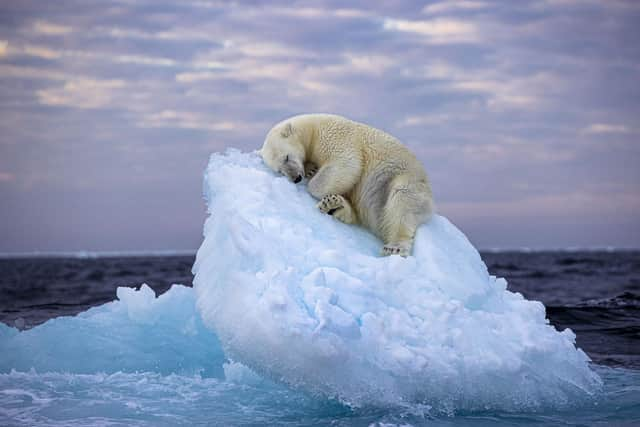Winning photo of young polar bear sleeping on a bed of ice comes to Edinburgh
An award-winning image that sums up the threat of climate change in a single click and has captured the attention of the world is now on show in Edinburgh.
‘Ice Bed’, by Nima Sarikhani, has been voted winner of Wildlife Photographer of the Year (WPY) People’s Choice Award after receiving a record number of 75,000 votes from across the world.
Advertisement
Hide AdAdvertisement
Hide AdThe image, which was on a shortlist of 25 entries, is now on show at the National Museum of Scotland as part of the Wildlife Photographer of the Year exhibition.


The young polar bear was captured after a three-day search through the thick fog off Norway’s Svalbard archipelago when the expedition decided to change course.
Two polar bears came into view, with the young male climbing onto the small iceberg and starting to claw away at the ice to make a bed.
Sarikhani said: “I am so honoured to have won this year's People’s Choice award for WPY, the most prestigious wildlife photography competition. This photograph has stirred strong emotions in many of those who have seen it. Whilst climate change is the biggest challenge we face, I hope that this photograph also inspires hope. There is still time to fix the mess we have caused.”
Dr Douglas Gurr, director of the Natural History Museum, said the “breath-taking and poignant image” allowed us to see the “beauty and fragility” of the planet.
Comments
Want to join the conversation? Please or to comment on this article.